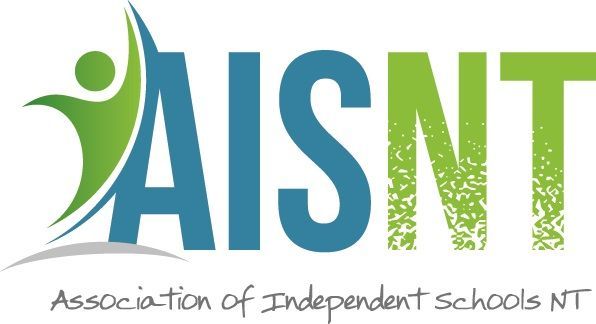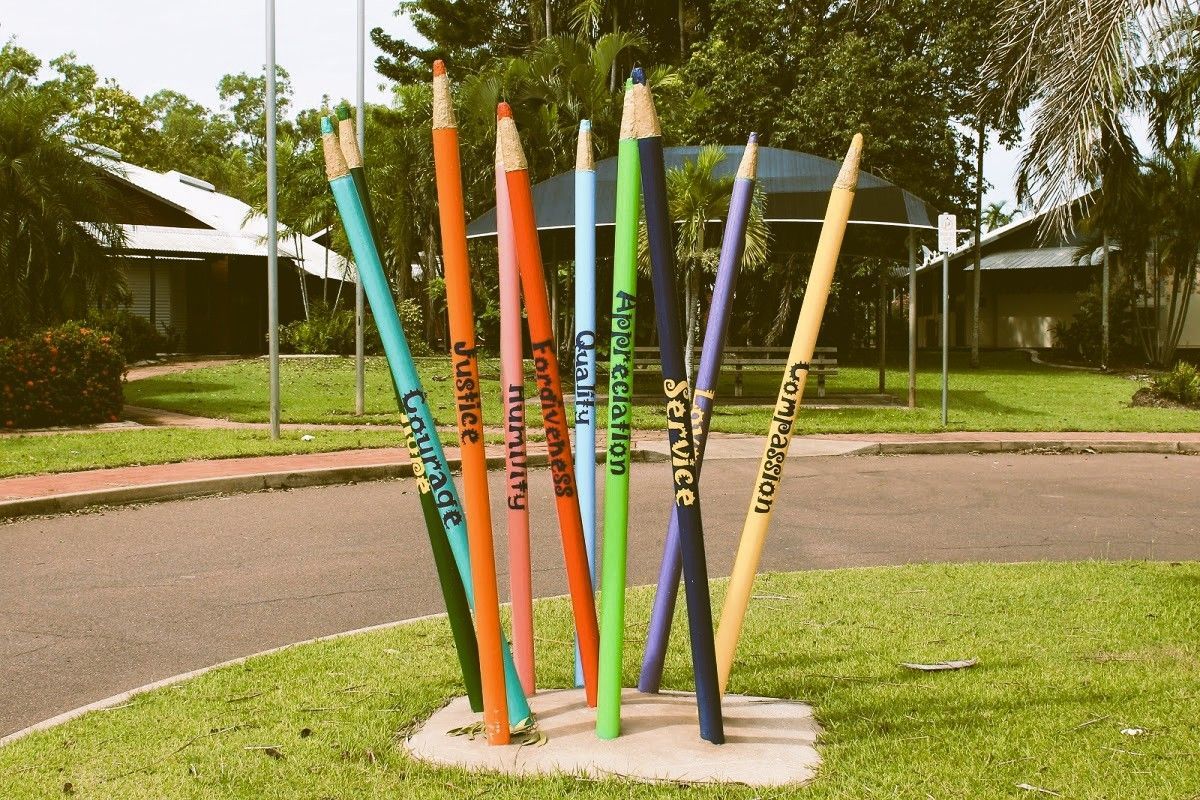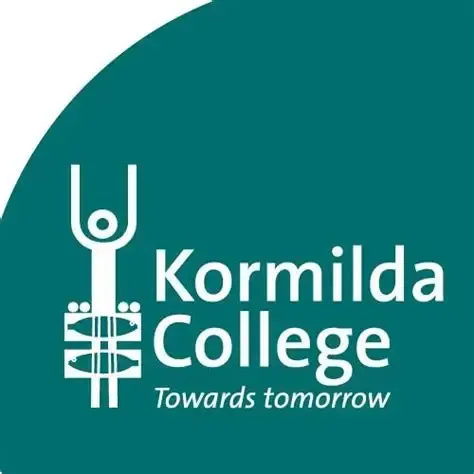Living Waters Lutheran School - Alice Springs
The Lutheran Church has traditionally been enthusiastic about their involvement in education, priding itself on caring for its Lutheran Congregations throughout life, from the cradle to the grave and of course this definitely means schools.
In the early 1980s members of the Alice Springs Lutheran Congregation began to talk about setting up a primary school which would provide good education and sound Lutheran teaching. The Pastor of the church at that time was Rev Peter Thamm. Peter had just arrived, and it was mentioned to him that there was to be a move at the annual meeting for the Parish Community to consider starting a school. Peter set up an Investigation Committee with David Stokes at the helm.
The idea sparked much debate, surveys and research into how other congregations made their decisions regarding starting schools. The congregation of the Church was kept informed and people became involved in the idea. Finally, the decision was made to proceed, with the Investigation Committee became the Steering Committee, with David Stokes the Coordinator.
There was a requirement to gain permission from the South Australian District of Lutheran Education and the Church Synod. At the time South Australia had other schools planned so permission took some time.
The Northern Territory Government supported the decision and meetings with the two senior local officers, Earl Watter and John Wauchope, of the NT Education Department took place almost weekly. Fortunately, both were members of the Lutheran congregation at that time. In addition, the Commonwealth Grants Commission were extremely helpful.
The NT Government helped secure a block of land for the school in Larapinta, which initially seemed quite far from town. A photo of the first sod being turned on a hot, windy day shows the site was truly in the bush. Despite this, the Government's offer was accepted. Soon, the surrounding area began to grow into the suburb of Larapinta, reflecting the Alice Springs boom of the 1980s.
Alice Springs is a place of beauty but contrasting this is that it is also a tough and harsh environment. David Fiebig’s comment on the ceremony held for turning the first sod, describes typical Alice. “It was a very unimpressive prickly paddock, and a very windy day. The wind blew nearly all of the soil off the shovel that Garry Stoll was using to turn the sod before Pastor Peter Thamm could complete the Blessing”.
Like many low-fee Independent Schools, Living Waters rose to the challenge of securing Government support, and crafting a plan that balanced ambition with affordable. At that time The Northern Territory Government was supporting the development of non-government schools and provided helpful funding. Devon System built Homes of Adelaide were engaged, and a suitable design developed. The building was to be an appealing transportable and it was transported in four pieces up the Stuart Highway, part of which was unsealed and chaotically rough. Then the endless working Bees of dedicated people, putting in fences, paving, putting in grass all to make it work but keeping the cost down. Peter Thamm recalls how the building arrived in sections: “one moment there were a few footings and within days we had a brick classroom and administration centre.”
The official opening of the school took place on May 17, 1987, even though the school had been operating since January 28. Pastor Tom Reuther who was in charge of Lutheran education, came up from Adelaide to officially dedicate the fledging school and the Administrator of the NT, Commodore Eric Johnson arrived from Darwin to perform the opening.
Few young people have the privilege of being present at the first day of their school. But January 1987 gave 25 students in T- 4 that opportunity in the raw landscape of their Central Australian “red field” site guarded closely by the majestic MacDonnell Ranges which tirelessly kept watch over this fledgling school. Alex Pollitt who is now a teacher at St Philips in Alice Springs, commenced year 4 on day 1. “The smell of fresh paint and recently laid carpets. Everything was new: desks, chairs, the blackboard, and of course us. We were the first and even at the tender age of 9, I was aware that this was something special.”
Enrolments grew from 25 to 45 in the first year and by 1990, when Nevin Nitschke took over as Principal they had risen to 120. In December 1993 the school farewelled those who had begun in transition in 1987 and by then numbers had risen to 188.
Indeed, few parents have the chance to send their children to a brand-new school with all its dreams and exciting prospects. It required courage and foresight on their behalf to entrust their children to a new school and faith in the start of a very important and dynamic dream.
Living Waters commenced with two teachers, Mrs Carolyn Camilleri who taught T1 and T2 and Miss Joan Schmaal who taught 3, 4 and 5. Miss Schmaal was appointed the inaugural principal. Mrs Dawn Ebert was appointed as the teacher assistant. Pastor Peter Thamm, the Lutheran Minister was also significantly involved. He writes “I loved taking school chapel with parents present”. Living Waters began as a school encouraging engagement.
In 1988 Peter Hassold took up the position of Principal. Staff for the year were Joan Schmaal, Carolyn Camileri and Janine Carter. in 1989 Dianne Klingberg and Sheryl Wagenknecht were added.
Schools starting out are often small and very fragile. They depend on staff being willing to multitask and to give beyond the call of duty. Dedicated parents are vital and “troopers” such as Gary Bastin, mentioned by Peter Hassold, who would give sacrificially of their time to help develop the grounds, were indeed gold. Living Waters had a good number of willing workers. An example of the enormity of the volunteer work which had to be done is described by Gary Bastin in the ten-year Anniversary Magazine. “It was 1989 and the Stage Two classroom block had been completed and needed to be landscaped for the opening. There was therefore a race to pave the entire area surrounding the new block. Chris (Gary’s wife) had me out of bed by 7am on a hot summer’s morning and off to school to do my duty.” There was no money to achieve this without willing volunteerism. Such an experience is found in so many of our schools throughout the NT. And indeed, the whole area was paved “on time and within budget”.
Some other tasks included: erecting play equipment with crowbar and shovel, erecting posts for netball and basketball rings as well as preparing the site for the caretakers demountable. Alice Springs people know that the ground in summer is as hard as steel. Another endless task in Alice Springs, if plants are to grow, is putting in dripper systems and continually maintaining them. Living Waters, like many of the new Independent Schools in the Territory were low fee schools and were able to access sufficient money to build the buildings but not to landscape and develop grounds. This demanded volunteer labour and money raised by Parents and Friends Associations. Ralph Hutchins notes that in 1987 the “P&F used to meet on Sunday afternoons at the school with thirty-plus adults and at times, an equal number of children. In the early days, the friends of the school were as strong in their participation as the parents. Meetings would start or finish with all hands to the tools, working on the school grounds and followed with afternoon tea.”
The development of the school was exciting but only made possible through the vision of its community, enthusiastic and inspiring leadership, a great dedication to the cause and a huge amount of hard work. It would be a mistake to think that this initial injection of enormous activity would start the school and then “that was that”. If the school was to succeed, it required ongoing energy and commitment. The task of transforming an idea into a living breathing entity was fraught with risk.
A strength of Independent Schools is enhanced by the returning of old scholars to the school to work. This has happened at Living Waters.
The school has developed and changed with the Alice Springs Community. Recently, its present Principal Lisa Goldsworthy set about making a major change to its learning program taking on board a range of modern thinking. This shows the maturity of the school as it sets out to serve the community in the best way possible.
Written by Chris Tudor



